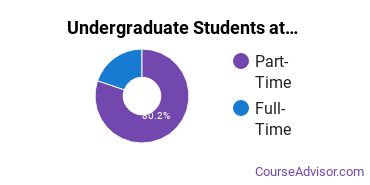Ottawa University - Online Overview
Ottawa University - Online is a private not-for-profit institution situated in Overland Park, Kansas. The surrounding area of the school is a good match for students who enjoy city life.
What Is Ottawa University - Online Known For?
- Students who want to work more closely with their professors have an easier time at Ottawa University - Online since the student to facuty ratio is 2 to 1.
- The highest award offered at Ottawa University - Online is the post-master's certificate.
- During a recent academic cycle, 100% of the faculty were full-time.
- Students who graduate from Ottawa University - Online with a bachelor's degree make about $55,552 a year. That's 36% more than those who graduate from other schools.
Where Is Ottawa University - Online?

Contact details for Ottawa University - Online are given below.
| Contact Details | |
|---|---|
| Address: | 4370 West 109Th Street, Suite 200, Overland Park, KS 66211 |
| Phone: | 913-701-3773 |
| Website: | www.ottawa.edu |
How Do I Get Into Ottawa University - Online?
You can apply to Ottawa University - Online online at: www.ottawa.edu/online-and-evening/apply-now
Can I Afford Ottawa University - Online?
Explore Best Ranked Schools for You
Ottawa University - Online Undergraduate Student Diversity

There are also 58 graduate students at the school.
Gender Diversity
Of the 44 full-time undergraduates at Ottawa University - Online, 36% are male and 64% are female.

Racial-Ethnic Diversity
The racial-ethnic breakdown of Ottawa University - Online students is as follows.

| Race/Ethnicity | Number of Grads |
|---|---|
| Asian | 1 |
| Black or African American | 6 |
| Hispanic or Latino | 6 |
| White | 23 |
| International Students | 0 |
| Other Races/Ethnicities | 8 |
Ottawa University - Online Undergraduate Concentrations
The table below shows the number of awards for each concentration.
References
*The racial-ethnic minorities count is calculated by taking the total number of students and subtracting white students, international students, and students whose race/ethnicity was unknown. This number is then divided by the total number of students at the school to obtain the racial-ethnic minorities percentage.
More about our data sources and methodologies.
